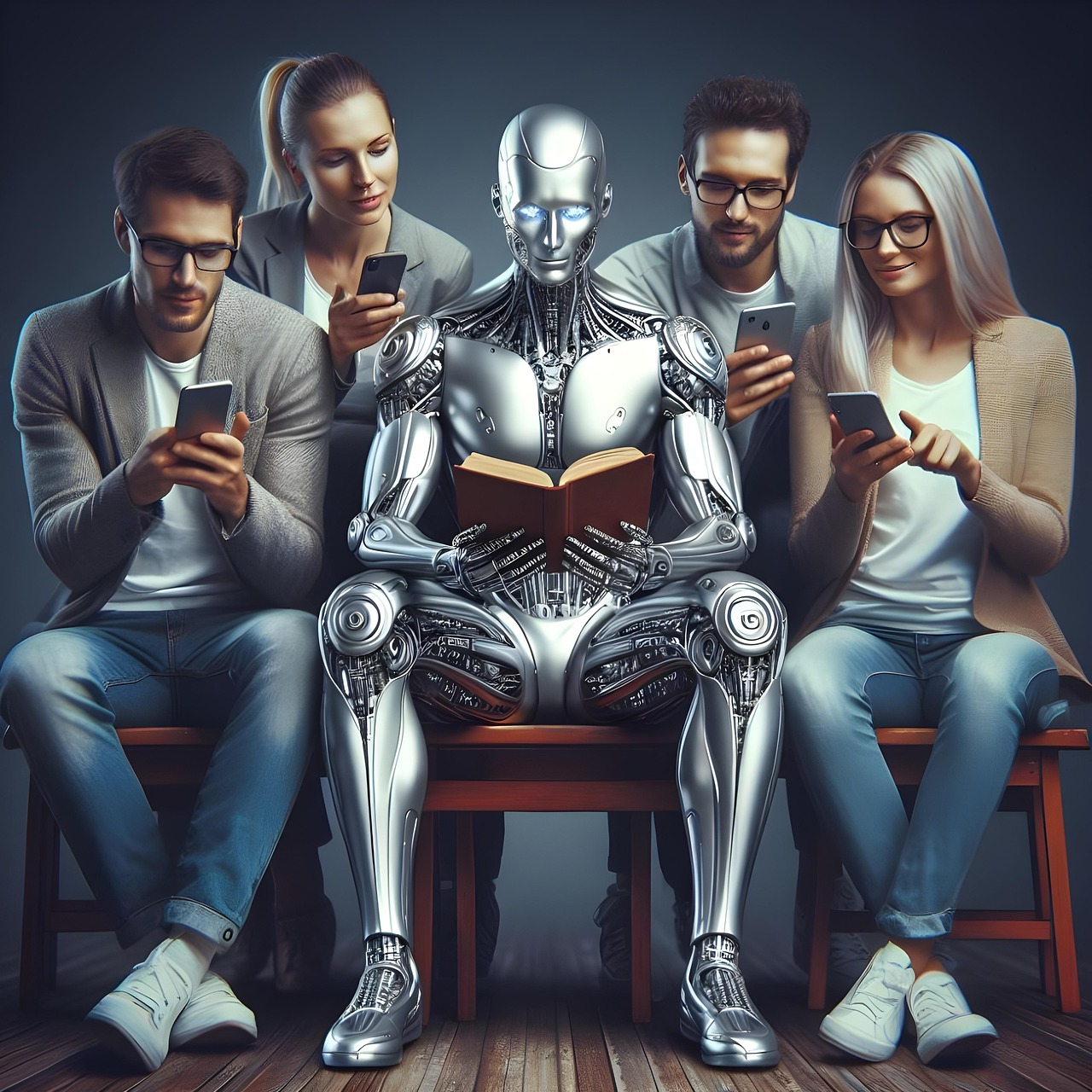
Changing environment and technology is advancing at an unprecedented pace, reshaping how we live and work. In this rapidly changing environment, it’s not only the latest innovations that are driving transformation but also the evolving responsibilities of IT professionals. Gartner’s insights into strategic technology trends highlight groundbreaking developments that are set to disrupt industries and accelerate business growth in the near future.
So, what does this mean for you? The message is clear: keeping up with emerging technologies is essential to safeguard and grow your career. In this article, we’ll guide you through the key tech trends that will redefine the digital landscape and outline Changing environment the skills you’ll need to succeed in this new era.
Read more about How to earn in online
Read more about Changing environment
1. Generative AI
Let’s kick off the list of 2025’s biggest tech trends with the buzzword of the year—Generative AI! This technology is leading the way, transforming industries through its capability to produce advanced, human-like outputs across text, images, audio, and even complex simulations such as Changing environment. Progress in generative models, such as GPTs and multimodal systems, is fueling breakthroughs in automated content creation, design optimization, and interactive digital experiences.
Read more about Medical Equipment
Beyond boosting efficiency, gen-AI is reshaping how companies tackle challenges, connect with customers, and innovate creatively—making cutting-edge tools more approachable and adaptable for diverse industries. In 2025, we’ll see even greater adoption of generative AI in daily workflows, enabling faster innovation and delivering tailored solutions at scale.
2. Quantum Computing
Quantum computing harnesses the principles of quantum mechanics to perform computations at speeds unimaginable for classical systems—especially for certain specialized tasks. In 2025, this technology is being explored in areas like cybersecurity, where it could potentially break encryption methods once considered unhackable and Changing environment, and in pharmaceutical research, where it can accelerate drug discovery by precisely simulating molecules.
Although still in its early stages, quantum computing is on track to disrupt industries by addressing challenges that today’s traditional machines cannot solve.
3. 5G Expansion
Next on the list is the ongoing rollout of 5G! This fifth-generation mobile network delivers lightning-fast upload and download speeds, broader coverage, and more reliable connections. Its expansion is unlocking the potential of emerging technologies such as the Internet of Things, augmented reality, and autonomous vehicles—all of which rely on ultra-low latency and high-speed connectivity.
By enabling near-instant communication and supporting massive data processing, 5G is laying the groundwork for the next era of innovation and digital transformation.
4. Virtual Reality (VR) 2.0
Next-generation Virtual Reality (VR) solutions are delivering deeper, more lifelike experiences. Thanks to advancements in display quality, motion sensing, and interactivity, VR is gaining traction across gaming, professional training, and therapeutic applications willing to Changing environment.
Modern VR devices are also designed with greater ease of use—lighter headsets, extended battery performance, and more intuitive setups—making them more appealing for everyday use and wider consumer adoption.
5. Augmented Reality (AR)
By 2025, Augmented Reality (AR) is expected to stand out as a key technological trend, expanding further into both personal and business applications. Enhanced hardware, including sophisticated AR glasses and upgraded mobile platforms, will deliver richer, more engaging user experiences.
AR has the potential to reshape industries such as retail, real estate, and education by revolutionizing how people explore products, absorb knowledge, and engage with their surroundings. With AR-enabled tools, users can seamlessly layer digital elements onto the physical world, creating a blended experience that connects virtual and real environments.
6. Internet of Things (IoT)
In smart cities, IoT technology integrates a wide network of sensors and connected devices to gather data for managing resources, infrastructure, and services more effectively. This includes monitoring traffic and transportation systems to ease congestion, utilizing smart grids to optimize power consumption, and deploying connected solutions to enhance public safety and emergency response. As urban areas expand, IoT plays a key role in handling complexity and improving quality of life for citizens.
7. Biotechnology in Agriculture
Biotechnology is transforming modern agriculture by creating crops with superior characteristics, such as improved resistance to pests and diseases, enhanced nutrition, and greater productivity.
8. Autonomous Vehicles
Another key innovation is autonomous transportation, where vehicles rely on artificial intelligence, sensors, and machine learning to operate without direct human input. Although fully self-driving cars are still being refined, many advancements are being made in incorporating partial autonomy into public transit systems and logistics. This can help reduce collisions, streamline traffic, and lower carbon emissions.
9. Blockchain
Originally created for Bitcoin, blockchain is now being applied far beyond digital currencies. Industries are embracing it for its ability to ensure transparency, strengthen security, and minimize fraud. Applications include verifying product origins in supply chains, developing secure voting mechanisms, and maintaining tamper-proof medical records.
10. Edge Computing
Edge computing refers to processing information closer to where it is generated instead of sending it all to a centralized data center. This approach is vital for use cases that need immediate responses and real-time decisions, reducing the delays often seen with cloud-based systems. Common applications include self-driving cars, industrial Internet of Things (IoT), and localized data handling in distant or isolated regions.
11. Personalized Medicine
Personalized medicine takes into account a person’s genetic makeup, environment, and lifestyle to diagnose and treat illnesses more accurately. Breakthroughs in genomics and biotechnology now allow healthcare providers to tailor therapies for maximum effectiveness while minimizing adverse effects.
This method is especially impactful in cancer treatment, where targeted therapies can address specific genetic mutations in tumors, improving patient survival and quality of care.
12. Neuromorphic Computing
Neuromorphic computing is an emerging technology that creates chips modeled after the structure and functioning of the human brain. Unlike conventional processors, these chips handle data in brain-like ways, making them especially suited for tasks such as pattern recognition and sensory information analysis.
The technology holds the potential to deliver massive gains in energy efficiency and computational capability, particularly in systems that need to learn and adapt in real time.
13. Green Energy Technologies
Developments in green energy technologies aim to boost the efficiency and affordability of renewable sources like solar, wind, and bioenergy. Innovations include advanced photovoltaic cells, turbines that can generate power at lower wind speeds, and biofuels derived from non-food crops. These solutions are essential for lowering global carbon emissions and supporting long-term sustainability objectives.
14. Wearable Health Monitors
Cutting-edge wearables now track health indicators in real time, such as heart rate, blood pressure, and even glucose levels. Synced with smartphones, they use AI to interpret the data, delivering personalized health insights and early alerts about possible medical issues. This innovation is fueling a move toward preventive care and individualized wellness management.
15. Extended Reality (XR) for Training
Extended reality (XR)—which includes virtual reality (VR), augmented reality (AR), and mixed reality (MR)—creates immersive learning environments. Fields like medicine, aviation, and manufacturing leverage XR for realistic, risk-free training scenarios. It boosts engagement, enhances knowledge retention, and lowers training expenses.
16. Voice-Activated Technology
Voice technology has advanced to the point where systems can process natural language with high accuracy. From smart speakers and automated customer support to connected cars and smart homes, voice control enables hands-free interaction, making tech more accessible and convenient.
Fun Fact: Nearly 62% of smart speaker owners use their devices for shopping at least once a month, highlighting the rise of voice-powered commerce. 🛒 (Source: Think with Google)
17. Space Tourism
Private space exploration is rapidly progressing, led by companies like SpaceX and Blue Origin. Efforts are underway to make space travel possible for non-astronauts, ranging from short suborbital trips that offer moments of weightlessness to plans for longer orbital journeys. Space tourism not only offers a new form of adventure but also advances aerospace research and technology.
18. Synthetic Media
Synthetic media refers to AI-generated content such as deepfakes, virtual personalities, and automatically created videos. While it opens vast opportunities for entertainment, education, and media production, it also raises significant ethical concerns. Increasingly, this content is becoming indistinguishable from human-made creations.
19. Advanced Robotics
Modern robotics has progressed to the point where machines can carry out complex functions with little or no human input. Robots are now used in areas like manufacturing for high-precision work, in healthcare as surgical assistants, and in households as helpers. Thanks to AI and machine learning, robots are becoming more intelligent, versatile, and capable.
20. AI in Cybersecurity
Artificial Intelligence plays a vital role in strengthening cybersecurity by automating complex tasks involved in threat detection and response. AI-powered systems can process massive volumes of data to spot unusual activities, forecast potential risks, and deploy instant protective measures. This development is essential to counter the growing complexity and frequency of cyberattacks.
21. Digital Twins
Digital twins are digital counterparts of physical assets that allow simulation, monitoring, and predictive maintenance. Widely adopted in industries like manufacturing, automotive, and urban development, they help optimize processes and anticipate issues before they occur. By testing changes in a virtual environment, organizations can cut down on real-world testing costs and time.
22. Sustainable Technology
Sustainable technology is emerging as a crucial trend as businesses increasingly adopt green innovations to fight climate change and reduce environmental footprints.
This movement covers the creation and application of technologies designed to lower energy usage, decrease carbon emissions, and encourage circular economy models. Examples range from renewable energy-powered data centers and energy-saving devices to AI-driven systems that enhance resource efficiency. Sustainable technology is reshaping business practices with a focus on long-term environmental balance.
The demand for sustainable solutions is fueled by rising consumer consciousness, tighter government regulations, and the need for companies to showcase corporate responsibility. Leveraging advancements in IoT, AI, and blockchain, organizations are improving sustainability in supply chains, waste reduction, and energy management.





